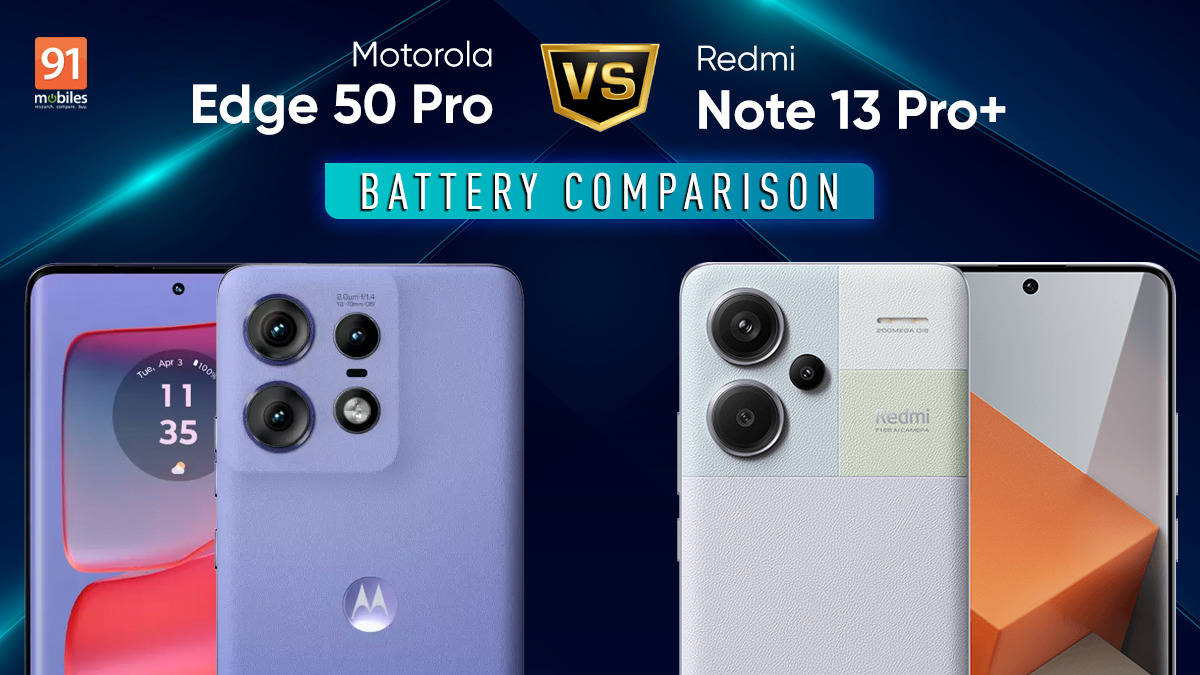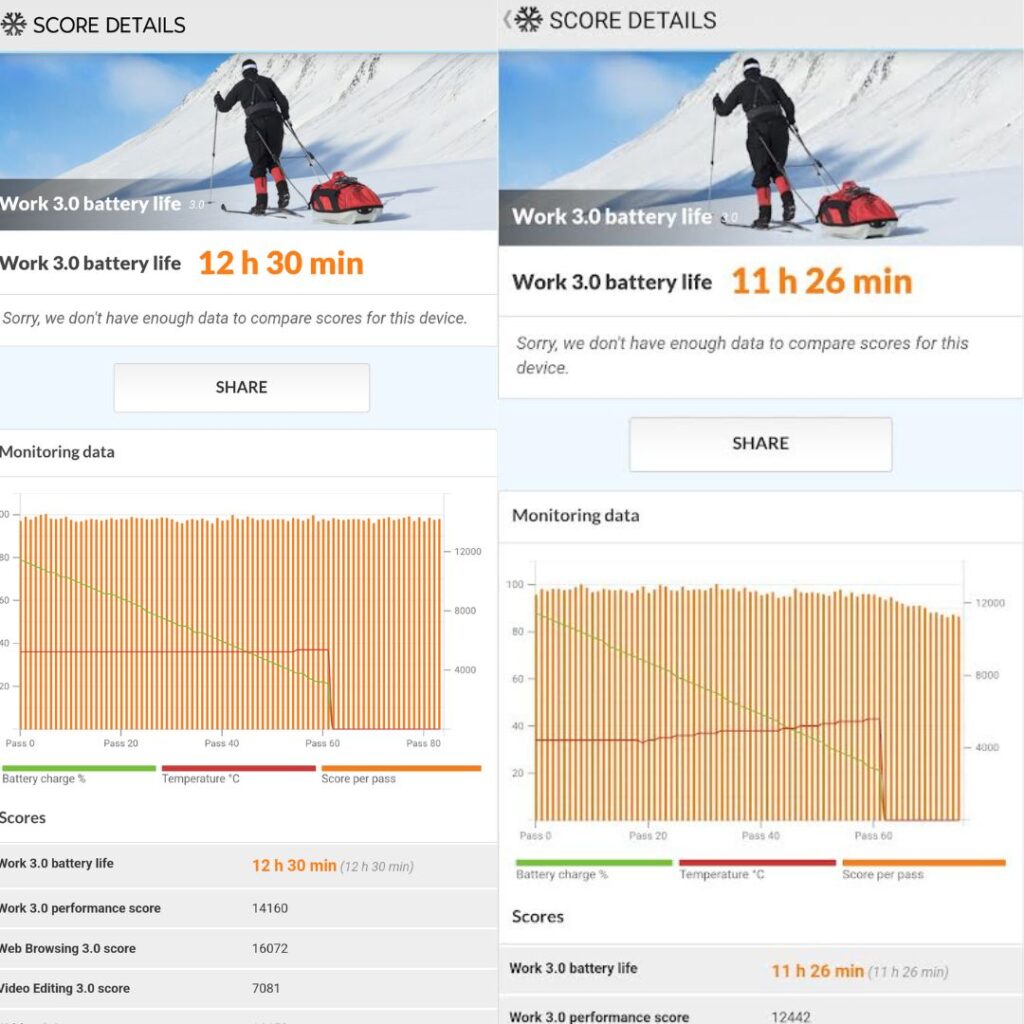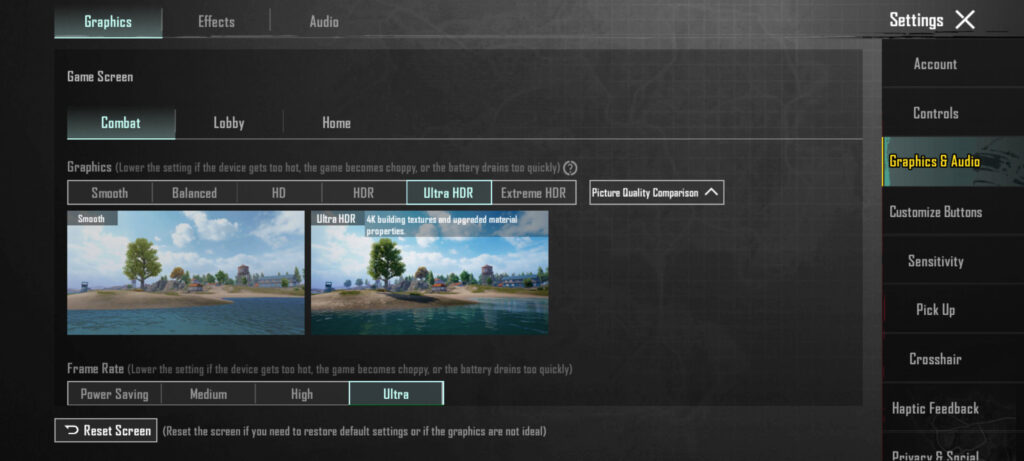
We previously conducted a performance comparison between the Motorola Edge 50 Pro and the Redmi Note 13 Pro+ to determine the superior device. Both smartphones also share some similarities when it comes to their charging speeds, with Motorola Edge 50 Pro offering a 4,500mAh cell paired with 125W fast charging support, while the Redmi Note 13 Pro+ features a 5,000mAh battery with 120W fast charging support. Despite the Edge 50 Pro packing a smaller power cell, does it reflect the same performance when compared to the Redmi Note 13 Pro+? Let’s find out in this battery comparison.
Table of Contents
PC Mark
The PC Mark battery performance benchmark measures the time a smartphone takes to drop from 100 percent to under 20 percent of its total battery. The Motorola Edge 50 Pro registers an impressive score of 12 hours and 30 minutes for its smaller 4,500mAh battery, while surprisingly, the Redmi Note 13 Pro+ registers 11 hours and 26 minutes, which falls under the expected range for its 5,000mAh battery. The Motorola Edge 50 Pro wins this round, thanks to its smaller yet substantially more resilient battery.

| Motorola Edge 50 Pro | Redmi Note 13 Pro+ |
| PC Mark score: 12 hours 30 minutes | PC Mark score: 11 hours 26 minutes |
Winner: Motorola Edge 50 Pro
Charging speeds
Both smartphones boast ridiculously fast charging support, at 125W for the Motorola Edge 50 Pro and 120W for the Redmi Note 13 Pro+. While the Motorola Edge 50 Pro may have a slight edge in terms of charging speed on paper, our tests revealed that the Redmi Note 13 Pro+ outperforms the Motorola phone. The Redmi Note 13 Pro+ takes just 29 minutes to go from 20 to 100 percent charge, while the Motorola Edge 50 Pro takes 39 minutes to go from 20 to 100 percent charge. The Redmi Note 13 Pro+ thus boasts more potent fast charging support.
| Motorola Edge 50 Pro | Redmi Note 13 Pro+ |
| Charging time: 39 minutes | Charging time: 29 minutes |
Winner: Redmi Note 13 Pro+
4K video streaming
Next on the list is a 4K video streaming test. We played the same YouTube video on both smartphones for roughly 30 minutes each at 4K resolution. At the end of the test, both the Motorola Edge 50 Pro and Redmi Note 13 Pro+ registered a battery drop from 100 to 95 percent, meaning a 5 percent net drop on both smartphones. The 4K video streaming test ends in a tie for both smartphones.
| Motorola Edge 50 Pro | Redmi Note 13 Pro+ |
| Battery drain: 5 percent | Battery drain: 5 percent |
Winner: Tie
Gaming test
Next up, we tested both smartphones by playing BGMI at the same graphical settings to gauge the battery drain on each device. After a 30-minute gaming session on both phones, the Motorola Edge 50 Pro experienced a battery drain from 93 percent to 84 percent, while the Redmi Note 13 Pro+ dropped from 93 percent to 85 percent. With a net battery drain of 8 percent, the Redmi Note 13 Pro+ wins the round, albeit with only a 1 percent margin.

| Motorola Edge 50 Pro | Redmi Note 13 Pro+ |
| Battery drain: 9 percent | Battery drain: 8 percent |
Winner: Redmi Note 13 Pro+
Verdict
The battery comparison revealed a close contest, with the Redmi Note 13 Pro+ securing a narrow victory over the Motorola Edge 50 Pro, particularly in terms of charging speeds and battery drain during gaming. However, the competition was tight, as the Motorola Edge 50 Pro proved to be a strong contender, offering comparable battery output despite featuring a smaller cell, which is impressive in its own right.
If battery life is a top priority for you, the Redmi Note 13 Pro+ emerges as the better choice compared to the Motorola Edge 50 Pro. If you prefer a more holistic smartphone experience, the Motorola Edge 50 Pro presents itself as a sensible option, with a comprehensive camera system with a telephoto lens, a robust and well-optimised battery, a stock Android-like UI, and a premium design.
You can check out the in-depth reviews for the Motorola Edge 50 Pro (review) and the Redmi Note 13 Pro+ (review) to learn more about the devices.












